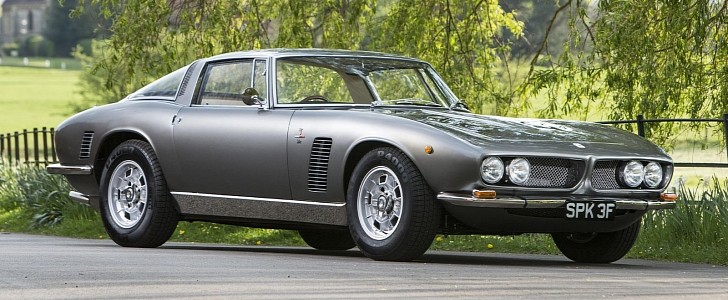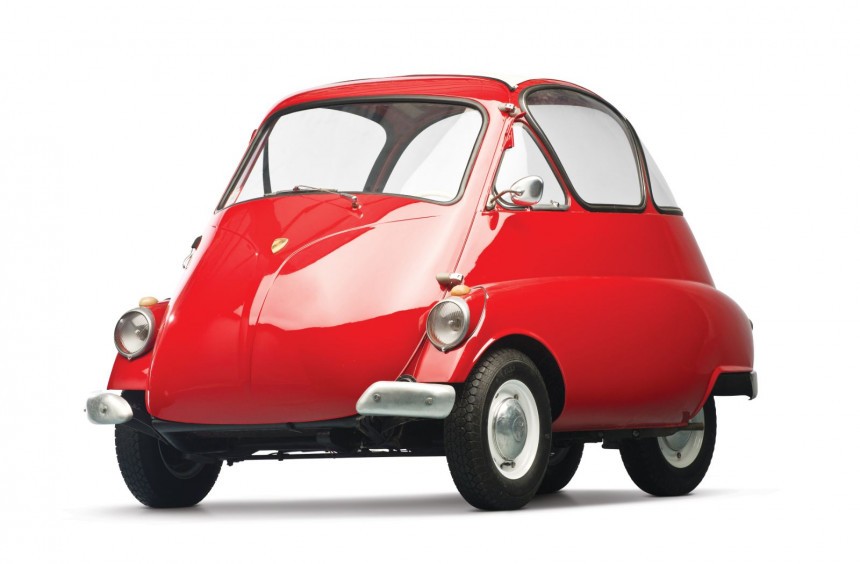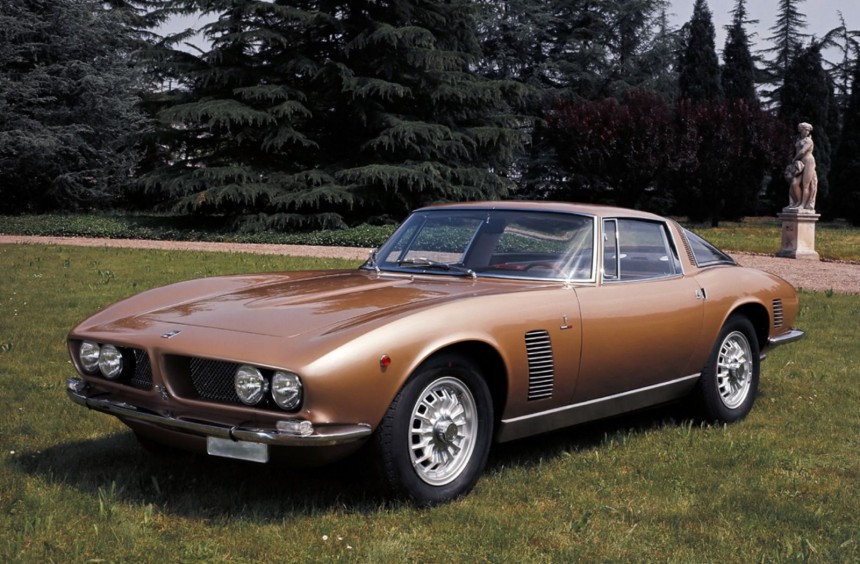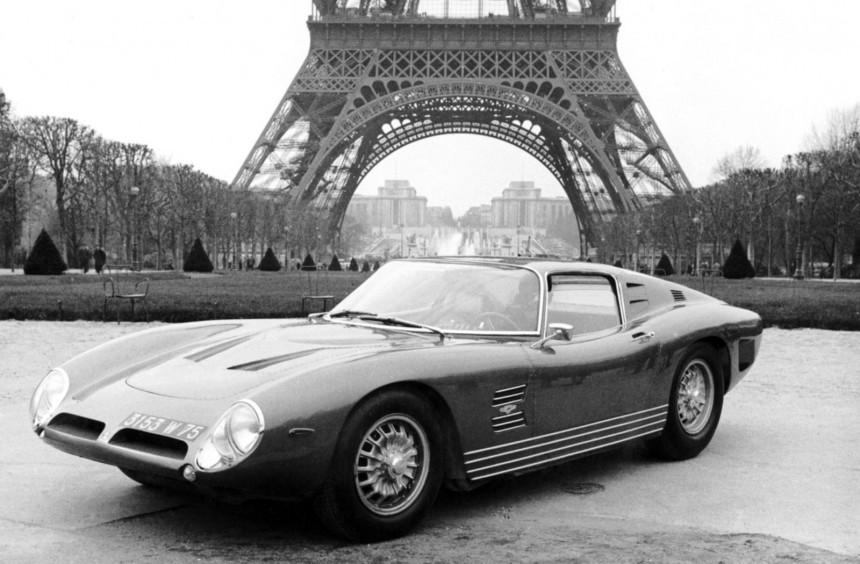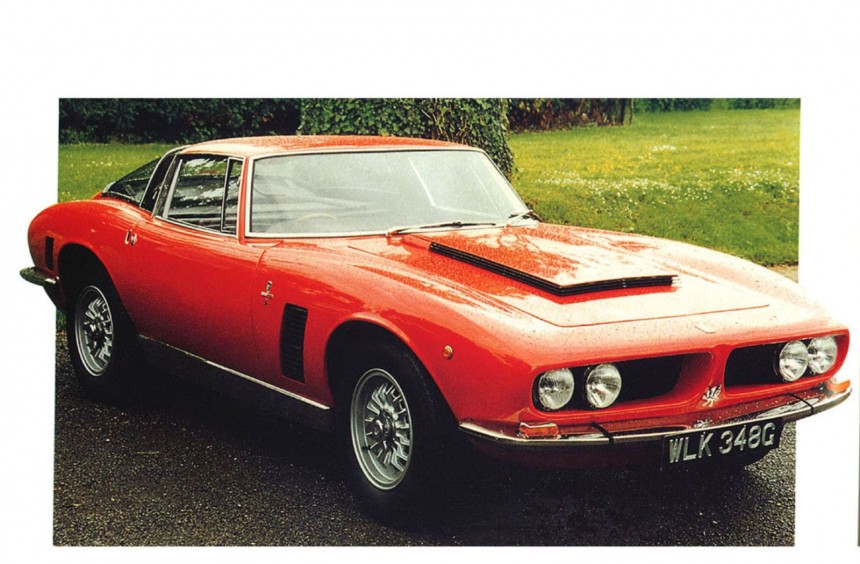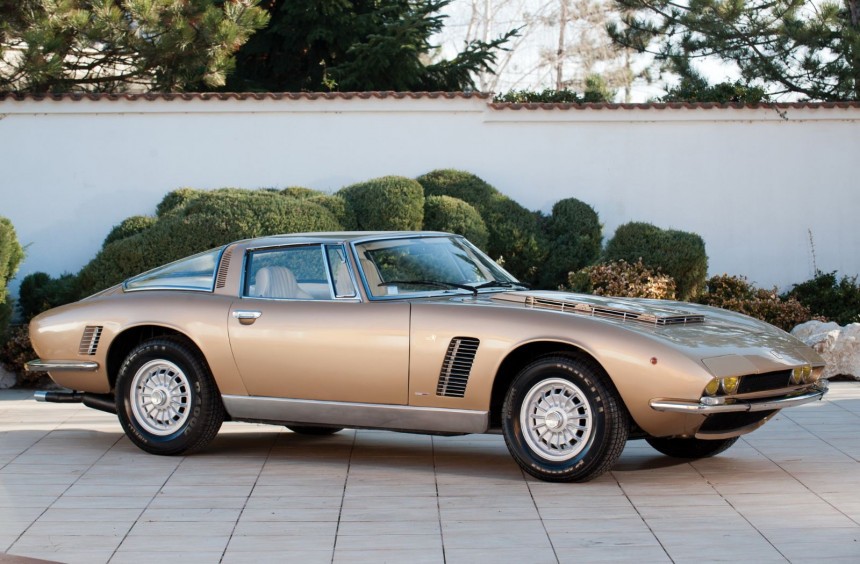From 1965 to 1974, those who loved American sports cars like the Corvette but wanted something more sophisticated and exclusive like a Ferrari or Maserati could get the beautiful Iso Grifo. Built in Italy with invaluable input from two of the greatest designers and engineers of all time, it flawlessly combined the smooth performance of a U.S.-built powertrain with the elegance and near-perfect drivability of a European grand tourer.
For younger enthusiasts, the name Iso has little significance nowadays but back in the 1960s the company was attempting to go head-to-head with established Italian carmakers like Ferrari, Maserati, or Alfa Romeo.
Its origins can be traced to the late-1930s Isothermos, a factory based in Genoa that produced refrigerators and electric heaters. After the end of the Second World War, operations were moved to Bresso near Milan where owner Renzo Rivolta decided to expand into motorcycle and scooter production since these types of vehicles were in high demand during that period.
This proved to be a very wise move that helped Iso flourish in the years that followed and allowed them to expand even further. In the early 1950s, they started developing a concept that combined the efficiency of a motorcycle with the protection offered by a car. Called Isetta, the small egg-shaped vehicle was an instant hit in Italy and its success led the company’s owner to sell the license for the project abroad. Among the clients were Bavarian manufacturers BMW who started building and selling their version of the Isetta in Germany where it ultimately became even more popular than in Italy.
Thanks to the tremendous success of this project, Rivolta now had the funds to start pursuing his dream of building sports cars. The first model released in 1962 was the IR 300, a two-seat grand tourer that resembled the Ferrari 250 GT Lusso and employed a Chevrolet 327 V8. While this was a great car, Iso’s masterpiece would be released three years later in the form of the gorgeous Grifo A3/L prototype (L for Lusso, meaning luxury in Italian).
Named after the mythological creature that’s half lion and half eagle, the car was the perfect combination between Italian design and American performance.
Its bodywork was drawn up by legendary designer Giorgetto Giugiaro who at the time worked for Bertone. To this day, the Grifo is regarded as one of his masterpieces and as you can see from the pictures in the gallery, it isn’t hard to understand why. From every angle you look at it, the car is absolutely stunning, rivaling much more famous Italian grand tourers of the era in terms of beauty.
Like the IR 300, it was powered by a 300-hp 5.4-liter (327 cu-in) Chevy small block V8 borrowed from the C2 Corvette. The man in charge of developing the chassis and refining the powertrain was none other than Giotto Bizzarrini, the exceptionally talented engineer responsible for the Ferrari 250 GTO or Lamborghini’s epic V12.
The decision to use a reliable American-built engine instead of developing a new one from scratch enabled Iso to market the Grifo at a very competitive price which made it an appealing alternative to the sports cars built by the likes of Ferrari, Maserati, or Alfa Romeo.
Bizzarrini was so pleased with the performance delivered by the Chevy powerplant that he decided to develop a racing version of the Grifo named A3/C (C for Corsa, meaning race in Italian) that he considered to be the spiritual successor of the 250 GTO. The eight-cylinder received several upgrades that increased output to 400 hp and was moved 1.6 inches (40 mm) towards the middle of the car. Furthermore, the body was redesigned by Piero Drogoto to be lighter and more aerodynamically efficient.
Both the road-legal and competition versions were unveiled in 1963 at the Turin Motor Show, receiving universal praise from the public and automotive press. The A3/L was particularly captivating thanks to its exquisite design, formidable engine, and impressive features like power windows, air conditioning, or the impeccably crafted full leather interior.
Bizzarrini’s partnership with Iso ended in 1964, with only 22 A3/C’s being built. The race car would continue to be developed and manufactured independently by the engineer’s newly established company in Livorno, while the A3/L prototype entered production a year later as the Iso Grifo GL.
The car didn’t just look but also drove like a pure Italian grand tourer, flawlessly blending comfort, luxury, and performance. Coupled with the price tag, these qualities made it extremely alluring for enthusiasts and although it was initially only sold in Europe, several units made their way to other parts of the world, including the United States. Two of them are featured in the wonderful short film by Popcorn Octane Productions that you can find at the bottom of the article.
Iso continued to improve the Grifo, releasing a Targa top variant in 1966 and the powerful 7 Litri a couple of years later. This model was extensively modified to make room for the huge Tri-Power version of the 427 Chevy big-block that made 435 hp and enabled the car to reach a top speed of 186 mph (300 kph).
In 1970, the Series II was launched, receiving a front-end redesign that was highlighted by a pair of hidden headlights. That year, the high-performance Can-Am version received a newer and more powerful 7.4-liter (454 cu in) Chevrolet engine that was linked to a five-speed ZF manual gearbox.
The final upgrade came in 1972 when the company ditched GM power in favor of Ford’s Boss 351 small-block that was fitted to the newly introduced Grifo IR-8.
Unfortunately, Iso ceased operations in 1974, mainly due to the oil crisis that crippled the automotive industry during that period. Throughout the nine-year production run, only 413 units were hand-built at the Bresso plant.
One of the best yet underrated grand tourers ever built, the Iso Grifo is a timeless piece of motorized art that flawlessly blends Italian design with American power.
Although it wasn’t the only Italian sports car to use a U.S.-built V8, the exquisite craftsmanship it employed, and its rarity make it a desirable collectible these days, fetching anywhere between $300,000 and $500,000 on the rare occasions one shows up at auctions.
Its origins can be traced to the late-1930s Isothermos, a factory based in Genoa that produced refrigerators and electric heaters. After the end of the Second World War, operations were moved to Bresso near Milan where owner Renzo Rivolta decided to expand into motorcycle and scooter production since these types of vehicles were in high demand during that period.
This proved to be a very wise move that helped Iso flourish in the years that followed and allowed them to expand even further. In the early 1950s, they started developing a concept that combined the efficiency of a motorcycle with the protection offered by a car. Called Isetta, the small egg-shaped vehicle was an instant hit in Italy and its success led the company’s owner to sell the license for the project abroad. Among the clients were Bavarian manufacturers BMW who started building and selling their version of the Isetta in Germany where it ultimately became even more popular than in Italy.
Named after the mythological creature that’s half lion and half eagle, the car was the perfect combination between Italian design and American performance.
Its bodywork was drawn up by legendary designer Giorgetto Giugiaro who at the time worked for Bertone. To this day, the Grifo is regarded as one of his masterpieces and as you can see from the pictures in the gallery, it isn’t hard to understand why. From every angle you look at it, the car is absolutely stunning, rivaling much more famous Italian grand tourers of the era in terms of beauty.
The decision to use a reliable American-built engine instead of developing a new one from scratch enabled Iso to market the Grifo at a very competitive price which made it an appealing alternative to the sports cars built by the likes of Ferrari, Maserati, or Alfa Romeo.
Bizzarrini was so pleased with the performance delivered by the Chevy powerplant that he decided to develop a racing version of the Grifo named A3/C (C for Corsa, meaning race in Italian) that he considered to be the spiritual successor of the 250 GTO. The eight-cylinder received several upgrades that increased output to 400 hp and was moved 1.6 inches (40 mm) towards the middle of the car. Furthermore, the body was redesigned by Piero Drogoto to be lighter and more aerodynamically efficient.
Bizzarrini’s partnership with Iso ended in 1964, with only 22 A3/C’s being built. The race car would continue to be developed and manufactured independently by the engineer’s newly established company in Livorno, while the A3/L prototype entered production a year later as the Iso Grifo GL.
The car didn’t just look but also drove like a pure Italian grand tourer, flawlessly blending comfort, luxury, and performance. Coupled with the price tag, these qualities made it extremely alluring for enthusiasts and although it was initially only sold in Europe, several units made their way to other parts of the world, including the United States. Two of them are featured in the wonderful short film by Popcorn Octane Productions that you can find at the bottom of the article.
In 1970, the Series II was launched, receiving a front-end redesign that was highlighted by a pair of hidden headlights. That year, the high-performance Can-Am version received a newer and more powerful 7.4-liter (454 cu in) Chevrolet engine that was linked to a five-speed ZF manual gearbox.
The final upgrade came in 1972 when the company ditched GM power in favor of Ford’s Boss 351 small-block that was fitted to the newly introduced Grifo IR-8.
One of the best yet underrated grand tourers ever built, the Iso Grifo is a timeless piece of motorized art that flawlessly blends Italian design with American power.
Although it wasn’t the only Italian sports car to use a U.S.-built V8, the exquisite craftsmanship it employed, and its rarity make it a desirable collectible these days, fetching anywhere between $300,000 and $500,000 on the rare occasions one shows up at auctions.
